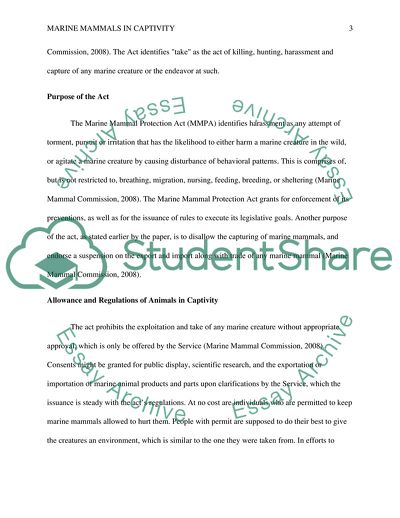Cite this document
(Marine Mammals in Captivity Essay Example | Topics and Well Written Essays - 1250 words, n.d.)
Marine Mammals in Captivity Essay Example | Topics and Well Written Essays - 1250 words. https://studentshare.org/biology/1792124-reaserch-paper-topic-on-marine-mammals-in-captivity-persuasive
Marine Mammals in Captivity Essay Example | Topics and Well Written Essays - 1250 words. https://studentshare.org/biology/1792124-reaserch-paper-topic-on-marine-mammals-in-captivity-persuasive
(Marine Mammals in Captivity Essay Example | Topics and Well Written Essays - 1250 Words)
Marine Mammals in Captivity Essay Example | Topics and Well Written Essays - 1250 Words. https://studentshare.org/biology/1792124-reaserch-paper-topic-on-marine-mammals-in-captivity-persuasive.
Marine Mammals in Captivity Essay Example | Topics and Well Written Essays - 1250 Words. https://studentshare.org/biology/1792124-reaserch-paper-topic-on-marine-mammals-in-captivity-persuasive.
“Marine Mammals in Captivity Essay Example | Topics and Well Written Essays - 1250 Words”. https://studentshare.org/biology/1792124-reaserch-paper-topic-on-marine-mammals-in-captivity-persuasive.


